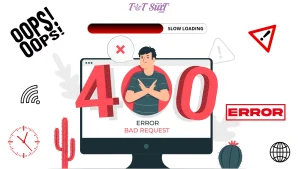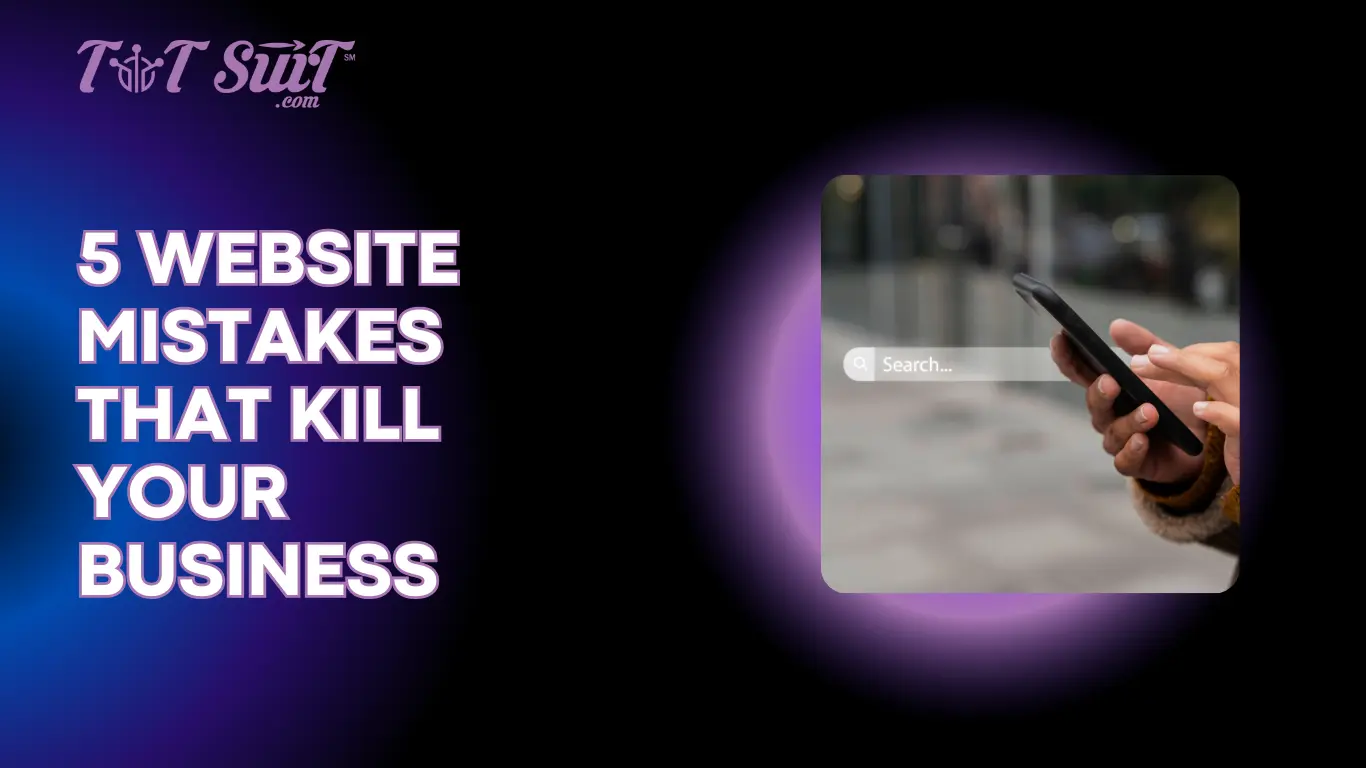Your website serves as the online storefront for your business and frequently serves as the initial point of contact with prospective clients. Creating a smooth and captivating experience is crucial to leaving a lasting impression. An AI-powered website that performs well personalizes user interactions, optimizes performance, and improves navigation to increase conversions, traffic, and credibility. However, a lot of companies make serious errors that damage their reputation online. We’ll look at five typical website errors in this post and how to avoid them.
1. Bad mobile experience: you’re losing half of your audience
Even though mobile devices account for over half of all web traffic, many websites are not mobile-friendly. A frustrating experience and fewer conversions result from a non-responsive design that makes users pinch, zoom, and navigate with difficulty.
How to fix it:
- Responsive design: The aesthetic website must adjust well to all screen sizes.
- Mobile speed should be the priority: Analyze mobile speed using Google PageSpeed Insights and do the needful.
- Fonts and buttons need to be optimized: Make sure that your buttons are large enough to be touched, and that your text is readable without zooming.
- Test on multiple devices: Regularly check the appearance of your website on different mobile devices for bugs and fixes.
A mobile-friendly site enhances usability, SEO, and visitor appeal, leading to greater conversions.
2. Slow loading speed: the silent killer of visitors
Did you know that if a website takes longer than three seconds to load, 40% of users will leave? In addition to annoying users, a slow-loading website lowers your visibility in search engine results and harms SEO rankings. Large, unoptimized images, too many scripts, and subpar server performance are some of the reasons for slow speeds.

How to fix it:
- Optimize images: Before uploading, resize images and use compressed image formats, such as WebP.
- Use browser caching to speed up load times for repeat visitors by storing temporary data.
- Employ a Content Delivery Network (CDN): CDNs speed up load times by distributing website content among several servers across the globe.
- Reduce Plugins and Scripts: Get rid of any third-party scripts and superfluous plugins that are causing performance issues.
- Select a quick hosting company: Performance can be severely hampered by a slow server. Invest in dependable hosting that responds quickly. You can boost user engagement, guarantee a seamless user experience, and raise your search engine rankings by increasing speed.
3. Confusing navigation: deterrent to visitors
A badly navigable site can infuriate visitors and deter them from staying before they can locate what they are seeking. Uncertain menus, too many options, and perplexing labels cause a confusing browsing experience that leads to higher bounce rates and less engagement.
How to fix it:
- Keep navigation simple: Limit the number of menu items and have them categorized logically.
- Use clear labels: No jargon or vague terminology—menu options should be straightforward.
- Include a search bar: A prominent search function enables users to quickly locate what they need.
- Ensure consistency: Be consistent in navigation menus across all pages for familiarity.
- Highlight important pages: Give prominence to important pages like ‘Contact Us‘ and ‘Services‘.A well-structured website withsensible navigation keeps visitors interested and increases the likelihood of conversion.
4. Poor call-to-actions (CTAs): lost opportunities
A successful site should take visitors to some specific action, be it signing up for a newsletter, buying something, or booking a consultation. Without visible, compelling call-to-actions (CTAs), users can leave without doing much.
How to fix it:
- Use action language: Phrases like “Get Started Now”, “Claim Your Free Trial”, or “Shop Now” call the user to action.
- Make CTAs prominent: Use high-contrast colours and position buttons where they are easily seen.
- Less friction: Keep forms brief—ask for only the required information to increase completion rates.
- Make the user journey smooth: Make CTAs lead to relevant pages without extra steps or distractions.
By adding strategically positioned, effective CTAs, you can significantly increase user engagement and conversion rates.
5. Ignoring SEO best practices: remaining invisible online
Lacking search engine optimization (SEO), your website might not gain visitors organically. Companies ignore key SEO considerations, resulting in poor rankings and lost traffic and conversion opportunities.
How to fix it:
- Use relevant keywords: Find and incorporate keywords naturally into content, headers, and metadata.
- Optimize title tags & meta descriptions: Ensure that every page contains a well-written meta description and title that mirrors the content.
- Improve Internal Linking: Internal linking relevant pages within your website for better navigation and SEO.
- Add Alt text to images: This allows search engines to comprehend image content and enhances accessibility.
- Update content regularly: New, useful content enhances SEO rankings and keeps your readers interested.
Implementing the following SEO techniques will enhance visibility, generate more traffic, and build your online credibility.
Conclusion: Build a website that works for you
Your website is more than an online presence—it’s a growth, engagement, and revenue generator. Avoid these five common mistakes to build a faster, mobile-ready, well-organized, action-focused, and SEO-friendly website that gets people coming back.
At Tiiitsuit, we are experts in creating high-performance websites using AI technology to make your business a success online. Do you need assistance in enhancing your website? Call or email us today to expand your online presence!




